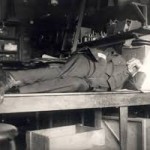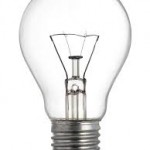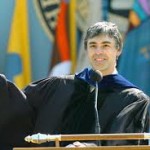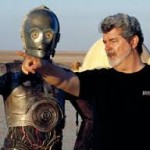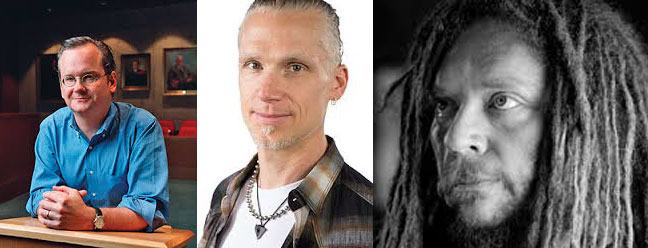This is an article from the journal Pastoral Psychology 58 (2009), 93-106. It was the first time I tried applying word search methods in the analysis of a specific aspect of dream content in a series of dreams from a particular individual. Although I don’t foreground the idea, it’s an early attempt at “blind analysis” in terms of an approach to identifying continuities between dream content and the individual’s concerns and activities in waking life.
Seeking Patterns in Dream Content: A Systematic Approach to Word Searches
Here is an article from the journal Consciousness and Cognition 18 (2009), 905-916. It is the first paper I wrote about word search methodology in the study of dreams.
Answering the Dream Questions of a High School Student
 Like many dream researchers I periodically receive emails from high school students asking for help with a class essay or project. It’s fun to think of the best, clearest, most useful ways of responding to these requests. I’d like to believe that the work I and all my colleagues in dream research are doing can at some level be explained in terms that make sense to a curious teenager. That means offering short, direct, non-technical answers. The questions students ask tend to be very broad, and a complete answer to some of them would require writing a whole book—not a practical way to respond either for me or the student.
Like many dream researchers I periodically receive emails from high school students asking for help with a class essay or project. It’s fun to think of the best, clearest, most useful ways of responding to these requests. I’d like to believe that the work I and all my colleagues in dream research are doing can at some level be explained in terms that make sense to a curious teenager. That means offering short, direct, non-technical answers. The questions students ask tend to be very broad, and a complete answer to some of them would require writing a whole book—not a practical way to respond either for me or the student.
Here is a recent exchange I had with a high school student, R.L., who agreed to let me post our emails to each other. I liked the way R.L. covered so much ground with these brief questions, and I took it as a challenge to answer in the most concise language I could manage.
Plus, I was impressed by R.L.’s audacity in sending me this request on December 9, two days before the essay was due!
Dear Dr. Bulkeley,
My name is R.L. I am a freshman at The ___ School in ___, Alabama. I have an essay assignment and I have chosen REM sleep and dreams. I was hoping you could offer some insight on this subject. Will you please answer the following questions?
1.What\’s the percentage of people that have nightmares?
2. Do we stop having dreams at a certain age?
3. Does everyone dream?
4. Can dreams be in color?
5. How can I remember my dreams, or improve my memory?
6. Can you sometimes control your own dreams, by what you do in real life?
7. What does it mean if I see people that are close to me, in my dreams?
8. Can dreams sometimes predict the future?
9. When a person has deja vu, could this be caused by remembering an earlier dream?
10. Is having continuous nightmares normal?
11. When we dream is it usually to express feelings we may be having on the inside, is there any other reason we may have dreams?
12. What is the average number of dreams a person may have a night?
13. When we dream, can the dream take away that conscious feeling we may be having on the inside?
This assignment is due December 11,2013. Thank you for your time and help.
Sincerely,
R.L.
[My response:]
Dear R.L.,
1. It’s pretty small, but more children and adolescents have nightmares than adults.
2. People recall fewer dreams the older they get, but that just might be because they stop paying attention.
3. Yes, in the sense that everyone’s brain is very active every night you sleep. You may not remember dreaming, but you were!
4. Yes, all the time.
5. Often it’s just a matter of deciding before you go to sleep that you’d like to remember a dream when you wake up.
6. Somewhat; it’s more like, whatever you really care about in waking life, you’ll probably dream about it at night.
7. It’s a sign of their emotional importance in your life, like a mirror of your relationships.
8. Dreams can anticipate possibilities that may turn out to actually happen.
9. Definitely!
10. No, I’d definitely talk to a doctor or mental health professional if I were having continuous nightmares.
11. My shortest definition of dreaming is “imaginative play in sleep,” so I think of dreams as a way our minds play during the night. We dream for the same reason children play–because it’s fun and engrossing and endlessly creative.
12. It’s hard to count! Some people have 4-5 a night, that’s a lot.
13. I don’t think take that feeling away, so much as expand our sense of who we are and what is possible in the world.
I hope that’s helpful! Good luck,
Kelly
The Technology of Dreaming
“For myself I never found need of more than four or five hours’ sleep in the twenty-four. I never dream.”
So said the famously hard-working inventor Thomas Edison in 1921 in his Diary and Sundry Observations. Edison claimed the only truly restful sleep was totally unconscious, and he regarded dreaming as a waste of mental energy that could be put to more productive use in waking life.
Nearly a century later Larry Page, another iconic figure of technological progress, offered a very different approach to dreams. In a 2009 commencement address at the University of Michigan he said, “You know what it’s like to wake up in the middle of the night with a vivid dream? And you know how, if you don’t have a pencil and pad by the bed to write it down, it will be completely gone the next morning? Well, I had one of those dreams when I was 23.” Page awoke from his dream and immediately began writing notes about downloading the entire worldwide web with all links intact—the seed idea for what he later built into Google. His advice to the graduates: “When a really great dream shows up, grab it!”
Which of these two world-changing innovators had it right? Should we strictly limit our sleep and ignore our dreams as Edison did? Or should we listen to our dreams and try to follow them as Page recommended?
The world is filled with people trying to be like Edison, working nonstop and vowing to “sleep when I’m dead,” but this behavior appears foolish and self-defeating in light of current research in sleep medicine. Numerous studies over the past several decades have shown that inadequate sleep has a negative impact on human health, with harmful effects on our emotional, cognitive, physical, and immunological well-being. What counts as “adequate” differs for each individual, but only a tiny portion of the population can sleep four or five hours a night and function the next day in an optimally healthy way.
The basic message of this research: A sure way to make yourself less productive is to artificially limit your individual sleep needs.
We can’t do without sleep. But can we do without dreams?
The scientific evidence is less clear on this point. Some people insist they never remember their dreams, although closer investigation usually finds they can recall a few dreams, just very infrequently. (Even Edison mentioned a couple of dreams in his diary.) Demographic surveys indicate most people remember one or two dreams a week. Women tend to remember more dreams than men, and younger people more than older people.
Intriguingly, researchers have found that dream recall can be dramatically increased with little more than simple encouragement and having a pad of paper and pen by one’s bedside, as Page did. It’s fairly easy, in other words, to remember more dreams if that’s what you want. Build it and they will come.
Neuroscientists have begun to fill in the picture of what happens in the brain while we’re dreaming. During rapid eye movement (REM) sleep, when most dreams seem to occur, activity slows down in the prefrontal cortex, the part of the brain most responsible for focused rational thought. Activity increases in the limbic system, an older part of the brain involved with emotions, memory formation, and instinctual responses (e.g., fight/flight, sexual arousal). Neural activity also increases in regions of the brain devoted to visual processing.
These findings make perfect sense in relation to empirical studies of dream content showing it to be loosely structured, highly associative, emotionally varied, and filled with intense visual images. The neuroscience of REM sleep matches up well with people’s subjective experiences of dreams, giving us more confidence there’s a real connection here between brain and mind.
Dreaming now seems best understood as the psychological expression of a distinctive mode of brain functioning devoted to memory, emotion, and playful meaning-making. It is inherently and powerfully creative, not only in producing experiential worlds of astonishing depth and realism but also in stretching our minds to make surprising new connections between disparate ideas, feelings, and impressions. Contrary to the stereotype of dreams as nothing but random nonsense, current research shows their content is meaningful at many levels, accurately reflecting our most important concerns and activities in waking life.
Edison was right to this extent: We can ignore our dreams, if we so choose. But Page was right on the bigger point. Dreaming is not wasteful; it has its own neurological integrity and psychological value. It taps into a deep inner wellspring of creative thinking that leads us beyond what is to imagine what might be.
In this sense we can think of dreaming as a kind of innate technology of the mind, a natural tool of creative consciousness.
The question for dream researchers then becomes, how can we use that tool better? How can we refine it, improve it, make it stronger?
This might sound like the start of a Dr. Frankenstein tale, with mad scientists rashly meddling in mysteries they don’t understand. But we are not the first to ask these questions. Throughout history, in cultures all over the world, people have used a variety of techniques to actively stimulate their inborn capacity for powerful dreaming.
For example, the Native American ritual of the vision quest involves several days and nights of solitary fasting in the wilderness as a means of inviting a revelatory dream. The Muslim practice of istikhara uses special prayers, purifications, and sleep positions to elicit a dream that helps resolve an important question or decision. The Indian sage Naropa taught his followers how to control their dreams through yogic methods of chanting, breathing, visualizations, and bodily postures. Temples devoted to the Greek god Asclepius thrived for centuries as holy sites where people came to worship, diet, exercise, and sleep in hopes of receiving a healing dream.
Cultural practices like these represent time-honored, ethically sensitive techniques for intensifying dreams and deriving more insight from them.
Eventually we will integrate our best models of dream content with highly advanced neuroscientific maps of brain activity during sleep, and this will set the stage for a new generation of technologies that directly stimulate the brain to produce more creative dream experiences. By fine-tuning the neural parameters of sleep we’ll be able to filter out the noise and amplify the signals of the dreaming imagination.
Undoubtedly this will be good news for the movie business. As George Lucas recently said at the USC School of Cinematic Arts when asked to predict the future of film, “The next step is to be able to control your dreams. You’ll just tap into a different part of your brain. You’re just going to put a hat on or plug into the computer and create your own world… We’ll be able to do the dream thing 10, 15 years from now. It’s not some pie-in-the-sky thing.”
That timeline seems about right to me, although I would envision devices that generate a more interactive and mutually respectful process between waking and dreaming, with a focus on awareness and growth rather than control for control’s sake.
Beyond their entertainment value, these dream technologies of the not-so-distant future will help us cultivate a more unified consciousness that takes advantage of our brain’s amazing creativity throughout all phases of the sleep-wake cycle.
####
Note: This essay also appears on the Huffington Post: http://www.huffingtonpost.com/kelly-bulkeley-phd/the-technology-of-dreaming_b_4378041.html
Thanks to Larry Lessig, Kurt Bollacker, and Jaron Lanier
In developing the Sleep and Dream Database (SDDb), a digital archive and search engine for dream research, I have been acutely aware that I possess no formal training in computer science or internet technology. My doctoral degree is in religion and psychological studies, and I learned many things in the course of my graduate education, but nothing about how to conceive, build, or use a digital database.
Fortunately I’ve benefitted from the wisdom of three people—Larry Lessig, Kurt Bollacker, and Jaron Lanier—who have helped me understand how to translate my psychology of religion interest in dreams into the functional mechanics of a digital database.
 Larry Lessig was a first-year law school student with my soon-to-be wife at the University of Chicago, at the same time I was a doctoral student at the U. of Chicago Divinity School. It was 1986 and 1987, and we spent a lot of time hanging out with Larry and a few other frighteningly smart, frighteningly conservative law students. Once I asked Larry what he was doing for fun, and he said he was spending a lot of time in cyberspace. I had recently read William Gibson’s 1984 novel Neuromancer, which popularized the term cyberspace, and excitedly I said to Larry, I’ve been reading Gibson’s work too, it’s so interesting how he envisions a disembodied reality of pure information flows…. Larry let me finish, then said he was spending time in actual cyberspace, exploring the earliest iterations of the world wide web. While I was reading cool science fiction about cyberspace, Larry was really in cyberspace, figuring it out, studying its original development as it happened.
Larry Lessig was a first-year law school student with my soon-to-be wife at the University of Chicago, at the same time I was a doctoral student at the U. of Chicago Divinity School. It was 1986 and 1987, and we spent a lot of time hanging out with Larry and a few other frighteningly smart, frighteningly conservative law students. Once I asked Larry what he was doing for fun, and he said he was spending a lot of time in cyberspace. I had recently read William Gibson’s 1984 novel Neuromancer, which popularized the term cyberspace, and excitedly I said to Larry, I’ve been reading Gibson’s work too, it’s so interesting how he envisions a disembodied reality of pure information flows…. Larry let me finish, then said he was spending time in actual cyberspace, exploring the earliest iterations of the world wide web. While I was reading cool science fiction about cyberspace, Larry was really in cyberspace, figuring it out, studying its original development as it happened.
I look back on that conversation and think of it as planting a seed that’s coming to fruition now with the SDDb. In 1999 Larry wrote a book called Code, and Other Laws of Cyberspace, and from that book I’ve learned the basic principle that everything we create in the digital world depends on the choices we make about how to structure information and its access. It’s not just machines doing things on their own, it’s us making machines that do certain things and not others. We can make good choices or bad choices about how we design those machines, freedom-affirming choices or freedom-limiting choices.
Thanks, Larry, for helping me understand that.
 I met Kurt Bollacker through Dominic Luscinci, a statistician in San Francisco who had worked with Kurt on another database design project. I really can’t believe my good fortune in having Kurt help me turn the SDDb from several pages of scribbled notes into a highly functional reality. I’ve learned a little about his work as Digital Research Director of the Long Now Foundation, and it reassures me that I have found a person who has not only the technical skill to build the SDDb but also the philosophical vision to see where the digital future is leading us, and to design the database with that vision in mind.
I met Kurt Bollacker through Dominic Luscinci, a statistician in San Francisco who had worked with Kurt on another database design project. I really can’t believe my good fortune in having Kurt help me turn the SDDb from several pages of scribbled notes into a highly functional reality. I’ve learned a little about his work as Digital Research Director of the Long Now Foundation, and it reassures me that I have found a person who has not only the technical skill to build the SDDb but also the philosophical vision to see where the digital future is leading us, and to design the database with that vision in mind.
One of the things I learned from Kurt early on was, “Data accumulate value over time.” I’ve adopted that as a kind of mantra for the SDDb. Data accumulate value over time. Information that seems trivial or useless today can be a treasure to researchers in the future. An awareness of that historical dynamic has a practical consequence for building databases: It means we should aim at a simple, flat, and state-free architecture that can exist independently of any specific type of software. Because software systems come and go, the best way to create a database that will endure far into the future is to structure the information in a way that will make it easy to transfer from one type of software to another. That’s a key principle in the overall design of the SDDb, and one that I hope will make the database useful to dreamers and researchers for many years to come.
For that and more, thanks, Kurt.
 The third person I want to acknowledge as an influence is Jaron Lanier and his book You Are Not a Gadget. I’m a religious studies scholar, so forgive me, but Jaron strikes me as a latter-day techno-prophet, warning us of the apocalyptic perils that lie ahead if we allow soulless machines to become our masters. His book is a passionate call to fight against “cybernetic totalism” and the economic power of “lord aggregators” of the web—I love that term—whose driving interest is to commercially exploit our personal information. As someone trying to build a database that includes a lot of personal information, I have thought long and hard about Jaron’s cautionary ideas, and I’ve done my best to design the SDDb in a way that will enhance rather than diminish people’s freedom and creativity in exploring the world of dreams.
The third person I want to acknowledge as an influence is Jaron Lanier and his book You Are Not a Gadget. I’m a religious studies scholar, so forgive me, but Jaron strikes me as a latter-day techno-prophet, warning us of the apocalyptic perils that lie ahead if we allow soulless machines to become our masters. His book is a passionate call to fight against “cybernetic totalism” and the economic power of “lord aggregators” of the web—I love that term—whose driving interest is to commercially exploit our personal information. As someone trying to build a database that includes a lot of personal information, I have thought long and hard about Jaron’s cautionary ideas, and I’ve done my best to design the SDDb in a way that will enhance rather than diminish people’s freedom and creativity in exploring the world of dreams.
I read Jaron’s book in the summer of 2011, and soon afterwards he was profiled in a New Yorker magazine article. The article was actually kind of lame, focusing more on his counter-cultural appearance and behavior than the substance of his ideas. Well, as fate or synchronicity would have it, the day after the New Yorker article came out, I bumped into Jaron down at the market, Andronico’s at the corner of Shattuck and Cedar in north Berkeley. He was there with his daughter in the produce section. Normally I’m very reluctant to just walk up and talk to anyone, let alone prominent people, but this was too coincidental, especially since I had learned in Jaron’s book about a 15th century text called “Poliphili’s Strife of Love in a Dream,” a fantastic dream text I’d never heard of before, which I immediately bought and started reading.
So anyway, we were both picking through the lemons, and I went ahead and said hi, I just read that New Yorker article about you. Jaron said yeah, he didn’t really recognize the person they were describing in the article. I quickly tried to think of something to say about how much I valued his ideas, but I’m not a very quick thinker, so all I could come up with was to say thanks for teaching me about “Poliphili’s Strife of Love in a Dream.” I’m sure that comment came across as completely weird and off the wall, and so I hastily moved on to the cereal aisle, and that was that.
So Jaron, if you ever see this, I’m really sorry for stalking you in the Andronico’s produce section a couple of years ago. What I really want to do is thank you, along with Larry and Kurt, for inspiring the mission, the content, and the code of the Sleep and Dream Database. Thanks to you all.
The Social Networks of Dreaming
 Digital technologies have given us new ways to socialize and to track, measure, and reflect upon our socializing. Humans have always been social animals, as Aristotle said long ago, but now we’re social animals with smart phones, email, Facebook, Tubmlr, and Twitter. It’s not just that these tools and platforms dramatically expand the range of our social interactions—they do—but more importantly they enable us to observe those interactions over time in finely grained detail and analyze them for personal insight.
Digital technologies have given us new ways to socialize and to track, measure, and reflect upon our socializing. Humans have always been social animals, as Aristotle said long ago, but now we’re social animals with smart phones, email, Facebook, Tubmlr, and Twitter. It’s not just that these tools and platforms dramatically expand the range of our social interactions—they do—but more importantly they enable us to observe those interactions over time in finely grained detail and analyze them for personal insight.
An unusual but promising development in this area is the use of social network analysis in the study of dreams. Despite their occasionally strange and otherworldly content, people’s dreams offer a surprisingly accurate source of information about their most important emotional concerns in waking life, including their relationships with other people.
Richard Schweickert, a professor of psychology at Purdue University, has done pioneering work in demonstrating the validity of applying the latest tools of social network analysis to dream content. Schweickert (with the help of G. William Domhoff) analyzed the lengthy dream journals of three participants, 2 women and a man. He identified all the characters that appeared in the dreams and created maps of “affiliation networks” to indicate how often the various characters appeared in the same dreams together.
His results showed that all three dream series had a nonrandom “small world structure,” meaning that certain characters appeared together in the dreams far more frequently than would be predicted by chance alone.
Schweickert’s research is more than another piece of evidence supporting the notion that dreams are meaningfully structured psychological phenomena, not just random neural nonsense from the sleep-addled brain. His findings cast new light on the profoundly social nature of human dreaming, showing that dreams can be a potentially valuable mirror revealing the people who matter to us the most.
For example, the participant known as “Merri” dreamed more often of her recently deceased sister than of any living person in her current waking life. This suggests that we dream about people who are especially meaningful, not necessarily the people with whom we spend the most time.
Schweickert also noticed that another of the participants had many dreams of family members and of work colleagues, but rarely dreams including people from both those spheres of his life. This participant was an insect taxonomist by profession, prompting Schweickert to speculate that “perhaps his cognitive style is to focus”; this might account for the mutually exclusive categories of social interaction in his dreams.
What’s most exciting about these findings is that they open the door to deeper and more sophisticated examinations of our social networks. Who are the interlinked communities of people we dream about the most often? Which of our dream characters serve as mediators connecting different communities? What happens when characters we personally know appear in the same dreams as celebrities we’ve never actually met (e.g., actors, musicians, athletes)? Who are the “lone wolves” of our dream life, people who only appear by themselves and never with other characters? How do the social networks of dreaming relate to other aspects of dream content such as emotions, colors, and settings? Do we only dream of some people in happy situations, and other people only in frightening scenarios?
The technology needed to answer these questions is emerging rapidly. Better than counting Facebook friends or Twitter followers, the big data of dreaming offers a valuable source of honest, accurate insight into the intricate web of social relationships that shape our lives.
Note: this post also appears on the Huffington Post, as of September 3, 2013.

